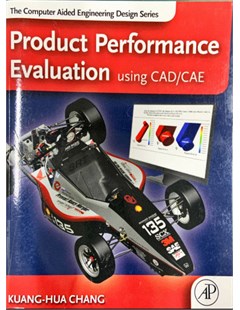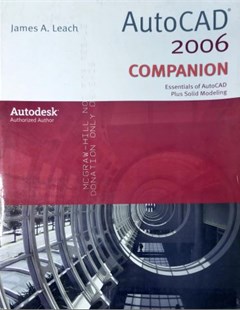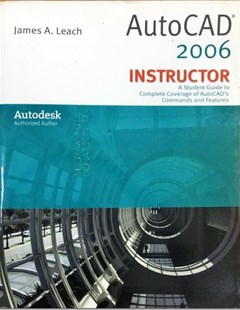Product performance evaluation using CAD/CAE
This is one book of a four-part series, which aims to integrate discussion of modern engineering design principles, advanced design tools, and industrial design practices throughout the design process.
2013
Product performance evaluation using CADCAE
This is one book of a four-part series, which aims to integrate discussion of modern engineering design principles, advanced design tools, and industrial design practices throughout the design process. Through this series, the reader will: Understand basic design principles and modern engineering design paradigms. Understand CAD/CAE/CAM tools available for various design related tasks. Understand how to put an integrated system together to conduct product design using the paradigms and tools. Understand industrial practices in employing virtual engineering design and tools for product development.
Table of Contents
Dedication
Preface
About the Author
About the Cover
Acknowledgments
Chapter 1. Introduction to e-Design
1.1 Introduction
1.2 The e-Design Paradigm
1.3 Virtual Prototyping
1.4 Physical Prototyping
1.5 Example: Simple Airplane Engine
1.6 Example: High-Mobility Multipurpose Wheeled Vehicle
1.7 Summary
Questions and Exercises
References
Sources
Chapter 2. Structural Analysis
2.1 Introduction
2.2 Analytical Methods
2.3 Finite Element Methods
2.4 Finite Element Modeling
2.5 Commercial FEA Software
2.6 Case Study and Tutorial Examples
2.7 Summary
Questions and Exercises
References
Sources
Appendix: The Default in.-lbm-sec Unit System
Chapter 3. Motion Analysis
3.1 Introduction
3.2 Analytical Methods
3.3 Computer-Aided Methods
3.4 Motion Simulation
3.5 Motion Simulation Software
3.6 Case Studies
3.7 Tutorial Examples
3.8 Summary
Questions and Exercises
References
Sources
Chapter 4. Fatigue and Fracture Analysis
4.1 Introduction
4.2 The Physics of Fatigue
4.3 The Stress-Life Approach
4.4 The Strain-Based Approach
4.5 Fracture Mechanics
4.6 Dynamic Stress Calculation and Cumulative Damage
4.7 Fatigue and Fracture Simulation Software
4.8 Case Studies and Tutorial Example
4.9 Summary
Questions and Exercises
References
Sources
Chapter 5. Reliability Analysis
5.1 Introduction
5.2 Probability of Failure—Basic Concepts
5.3 Basics of Statistics and Probabilistic Theory
5.4 Reliability Analysis Methods
5.5 Multiple Failure Modes
5.6 General-Purpose Reliability Analysis Tools
5.7 Case Study
5.8 Summary
Questions and Exercises
References
Sources
Project P2 Motion Analysis Using Pro/ENGINEER Mechanism Design
P2.1 Introduction to Pro/ENGINEER Mechanism Design
P2.2 Sliding Block
P2.3 Using Pro/ENGINEER Mechanism Design for the Sliding Block
P2.4 Single-Piston Engine
P2.5 Using Pro/ENGINEER Mechanism Design for the Single-Piston Engine
Exercises
Project S2 Motion Analysis Using SolidWorks® Motion
S2.1 Introduction to SolidWorks Motion
S2.2 Sliding Block
S2.3 Using SolidWorks Motion for the Sliding Block
S2.4 Single-Piston Engine
S2.5 Using SolidWorks Motion for the Single-Piston Engine
Exercises
Project P3 Structural FEA and Fatigue Analysis Using Pro/MECHANICA Structure
P3.1 Introduction to Pro/MECHANICA Structure
P3.2 Simple Cantilever Beam
P3.3 Thin-Walled Tank
P3.4 Fatigue Analysis
Exercises
Project S3 Structural FEA and Fatigue Analysis Using SolidWorks Simulation
S3.1 Introduction to SolidWorks Simulation
S3.2 Simple Cantilever Beam
S3.3 Thin-Walled Tank
S3.4 Fatigue Analysis
Exercises
Index
 |  |  |
Product performance evaluation using CAD/CAE | Autocad 2006 companion: Essentials of autocad plus solid modeling | Autocad 2006 instructor |
Thứ Ba, 19:55 14/02/2023
Copyright © 2018 Hanoi University of Industry.